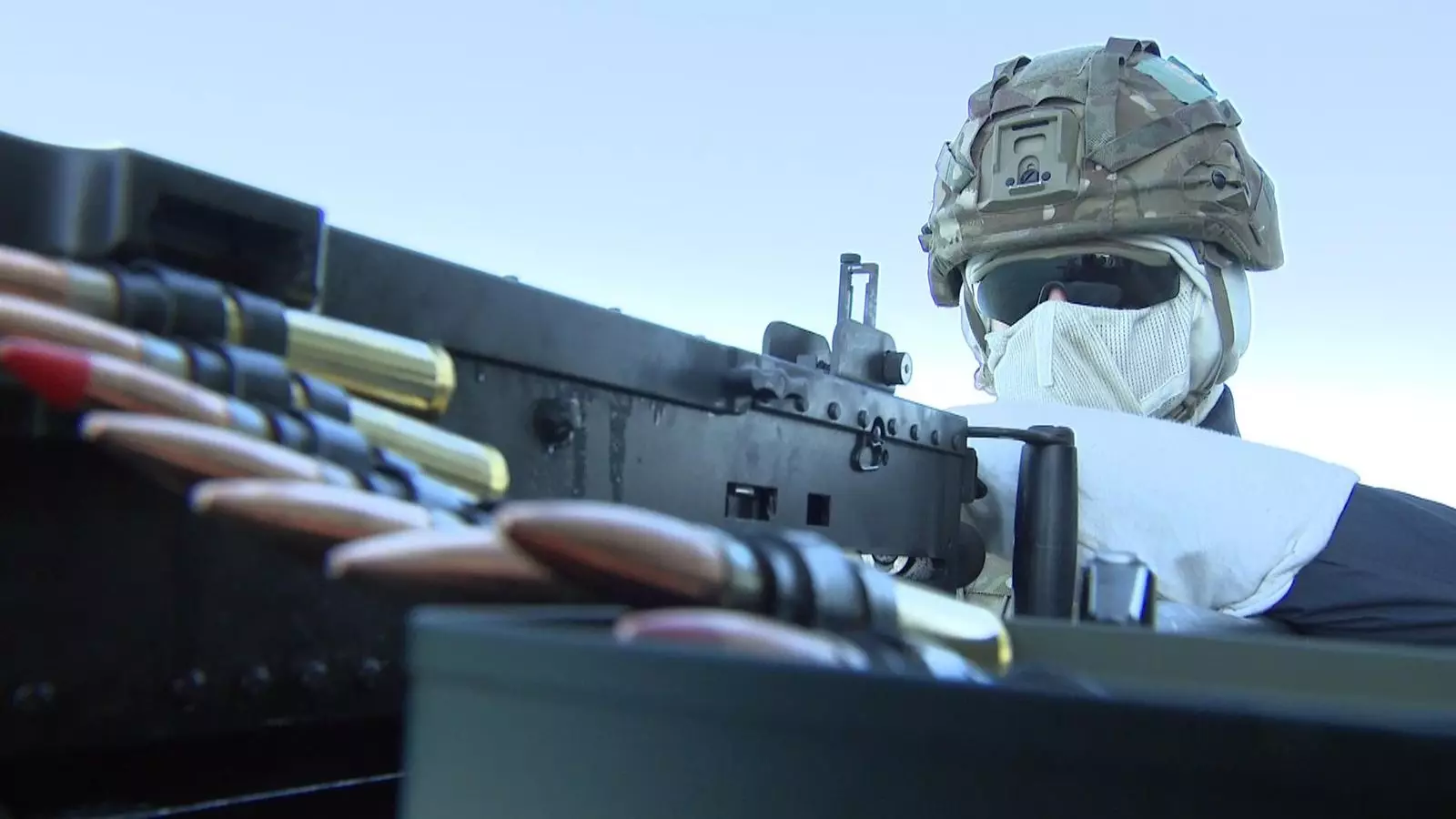The alarm resonates through the corridors of the HMS Dauntless, swiftly jolting the crew into a state of high alert. The stark reality of modern warfare is etched in every command barked over the intercom. The Royal Navy is no longer just preparing for traditional combat but is poised against the advancing evolution of warfare—unmanned drones and uncrewed vessels. The recent training exercise off the Welsh coast highlights an unsettling truth: as global tensions escalate, particularly in regions threatened by Iranian aggressiveness, the United Kingdom finds itself in a precarious position, balancing readiness with an alarming shortage of resources.
In this scenario, the Royal Navy’s Type 45 destroyer takes center stage. With the HMS Dauntless gearing up for a significant deployment to Asia, alongside one of the UK’s aircraft carriers, it becomes instilled with a heightened sense of importance. The prospect of navigating through hostile waters, especially with Iranian-backed factions looming, underscores not just a challenge in terms of strategy but signals a dire warning about the state of our naval power. The reality is that the defense apparatus, once regarded as invulnerable, is now facing crippling deficiencies due to years of budget reductions and strategic neglect.
Unraveling the Defense Budget Debate
As Luke Pollard, the armed forces minister, asserts that the ship is well-prepared, we must dissect what ‘well-prepared’ truly means in this context. While Pollard advocates for the UK’s “formidable capabilities,” one cannot overlook the palpable frustration within defense circles over the slow increase in military spending. The proposed rise to 2.5% of GDP by 2027 appears optimistic at best and irresponsible at worst. Defense insiders voice concerns that this gradual increase is insufficient to counter the rapidly changing global threat landscape.
Beyond rhetoric, the reality on the ground during these exercises points to a creaky ship of state reeling under self-inflicted budget cuts. Years of austerity have eroded critical supports, leaving our naval capacity stretched thin. In light of these training schemes, we see our cutting-edge technology tested against real threats, overshadowed by questions regarding sustainability. If the HMS Dauntless truly embodies a formidable defense, one might ask: how many more exercises can our fleet endure without the necessary investments to upgrade aging ships and technology?
Drones: A Modern Menace
The emergence of drone warfare is a pivotal aspect of this new landscape of conflict. During the exercises, both simulated threats and real unmanned aerial systems exemplified a shifting paradigm. The fact that these uncrewed vessels packed with explosives represent an evolving maritime threat cannot be overstated. Just look at Ukraine, where drones have redefined their naval strategy with astounding efficacy against Russia’s Black Sea Fleet.
Fundamentally, our plans for responding to this chilling new reality seem reactive rather than proactive. While training drills like those conducted aboard the HMS Dauntless are crucial, they also reveal a glaring contradiction. As our armed forces engage in rigorous simulations and activations of defense systems, the broader context begs for a shift in commitment to innovative defense measures that prioritize capabilities to outpace adversaries. In a world where technological capabilities are changing at a breakneck speed, we risk falling behind if we cannot pivot with agility.
The Price of Complacency
As tensions rise between Washington and Tehran and other global hot spots start to flare, every operation instills a sense of urgency. Yet, the notion that we can effectively defend our interests with a dwindling naval fleet is heavily flawed. The repeated assurances of formidable capability ring hollow against the backdrop of an increasingly perilous geopolitical environment. What’s at stake is not merely the protection of a singular aircraft carrier but the very credibility of the United Kingdom’s commitment to global security.
The upcoming deployment will serve as not just a test of naval capabilities but a tan of the overarching disengagement that has characterized recent British defense policy. As the Royal Navy seeks to navigate hostile waters, there must be an awakening to the limits of relying on outdated frameworks and strategies. That unyielding quest for power and prestige must be matched with equally ambitious commitments to reimagining our military infrastructure and capacities.
In these trying times, the question remains: can the HMS Dauntless and the future of the Royal Navy transform threats into triumphs, or will we become victims of complacency in an unforgiving world?



Leave a Reply